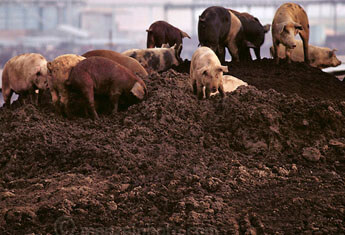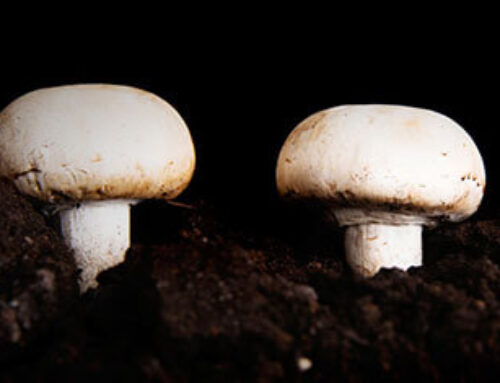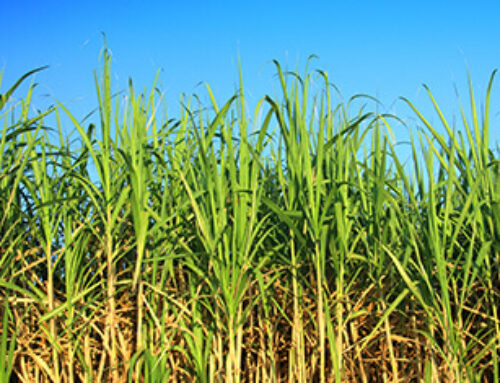1. Pig Manure returning cropland directly
There are various organic matters in fresh pig manure, including 0.5% nitrogen of 0.5%, phosphorus of 0.25% and potash 0.5%, besides this, it also contains humic acid with colloidality that can ameliorate the soil’s crumbled structure, strengthen soil water storage ability and soil ventilation, which advances the growth of crops. As the statistic showed that one pig can void feces about 2-2.5t in one year, its fertilizing ingredient is about 50kg of ammonium sulfate,27.5kg of calcium superphosphate and 20kg of potassium sulfate if converted into fertilizer. By using the fresh pig manure in cropland, on the one hand, the grain output can raise about 50kg per hectare, in the meantime, it can also improve soil fertility and achieve resourceful utilization. On the other hand, pig manure has quite high water content with niff, huge amounts of nitrogen volatilizing lead to low fertilizer efficiency, and the pathogenic microorganism may pose a threat to the environment or human health. In addition, the self-cleaning capacity of oil is limited, if over-fertilization, it’s easy to produce pollution, so the application rate of pig manure is also quite limited.
2. Pig Manure as Fodder
Taking pig manure as fodder means the feed processing of manure resources, which is an important way for the integrated utilization of poultry manure and an important measure to save food resources as well. The gross protein value in pig manure is almost higher than its feeding fodder. In addition, it also contains other basic nutrition content, such as crude fiber, calcium, phosphorous, mineral substance, trace element, various vitamins and some unrecognized neurotrophic factors. Most vitamin content in pig manure is higher than their basic feeding fodder. So pig manure should be processed immediately, aiming to avoid rapid decomposition and fast decline of nutrition value. There are some ways of pig manure treatment, the main methods used currently are dried feeding, silage ammoniation, and fermentation. The processed pig manure can be used as feed for ruminants, pigs, fish and so on, especially for fish feed. 10 – 23.61 kg of pig manure can produce about 1kg of water-like fish feed and omnivorous fish feed, and the manure of one pig can make approximately 50kg of fish feed.
3. Biogas Fermentation
Biogas fermentation is a series of processes that under anaerobic conditions, microorganisms make the organic materials through complex catabolism to produce biogas and sludge eventually. After biogas fermentation, the odor of pig manure can be eliminated, most of the parasites, spawn and some germs existing in pig manure can be killed via anaerobic fermentation, which is very helpful to improve rural living conditions. Biogas fermentation means turning pig manure from waste to asset. Methane generated after fermentation can be used as fuel, and biogas liquid residue with large amounts of organic matter can be used as good organic fertilizer, which can increase the fertility of the soil, ameliorate the soil condition, and prevent soil compaction as well as reduce the actual use of fertilizers.
4. Animal Treatment
Pig manure can be used to breed earthworms and maggots. Earthworms have a strong ability to deal with the trash and disintegrate the biological protein and other nutrition contents from pig manure, which shows both environmental value and economic significance. Therefore, the manure decomposed by earthworms not only has a better fertilizer effect but also can avoid environmental pollution caused by the direct application of poultry manure in cropland. Maggot, rich in protein, has high-quality protein and can be used as the ideal fodder for fishes, crabs, or other aquatic animals and poultry. Omnivorous maggots grow fast and can produce antimicrobial peptides with the function of strong immune and resistance, at the same time, its breeding method is very simple with low input costs but high output benefits. Also, the ecological treatment of house flies maggots in pig manure can reduce manure emissions and escherichia Coli bacteria, and effectively decrease skatole and organic pollution.
5. Aerobic Composting Fermentation
When directly putting the pig manure without decomposing into cropland, because of the strong decomposing of unstable organic material, it will consume oxygen of the rhizosphere and create toxic substances (like organic acid) that will inhibit the growth of crops, especially harmful to crops germination and growth. Aerobic composting fermentation of pig manure refers to that pig manure using the action of aerobic microbial to decompose the organic matter under the aerobic conditions, produce the humic substances, and inactivate the pathogenic microorganism as well. It is a kind of method that can convert the pig manure into organic fertilizer to improve soil condition, help crop growth and make assimilation more easily. Taking the well-decomposed pig manure as organic fertilizer will not only increase crop yield and quality, it also can improve the physical and chemical properties of the soil. At present, aerobic composting methods have been widely used in decomposing poultry manure. In commercial composting facilities, poultry & livestock waste, such as pig manure (nitrogen-rich organic materials), are essential and indispensable raw materials to balance C:N ratio. Compost windrow turners are usually used in large-scale pig manure composting, introducing oxygen into the compost pile helping to speed the decomposition process.
Related Reading: Pig Manure Composting Technology






